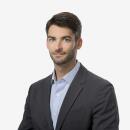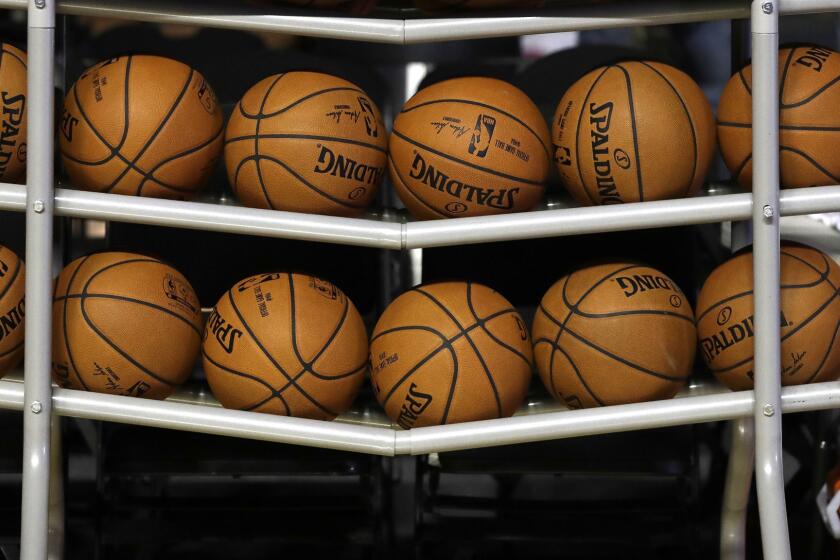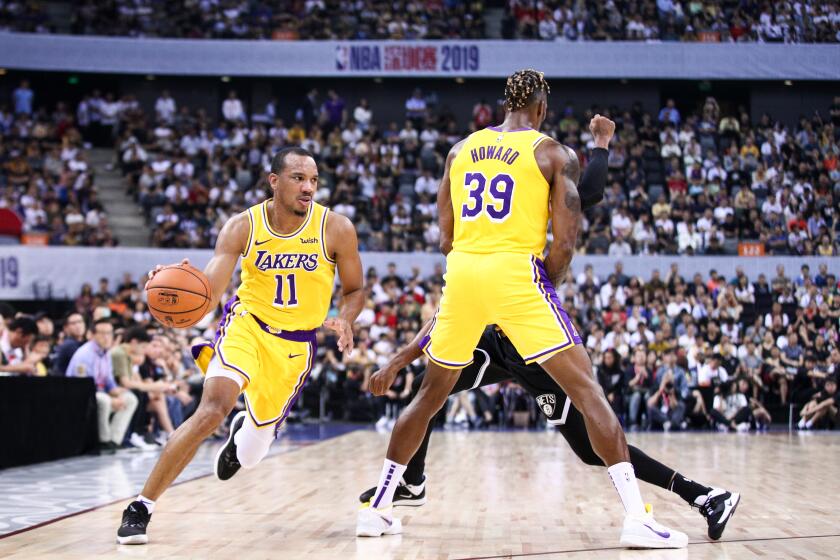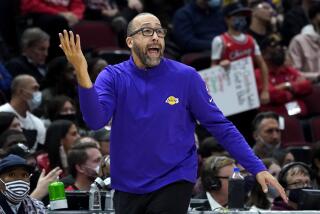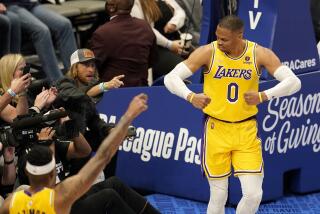What the Lakers and Clippers can expect during game day in the bubble
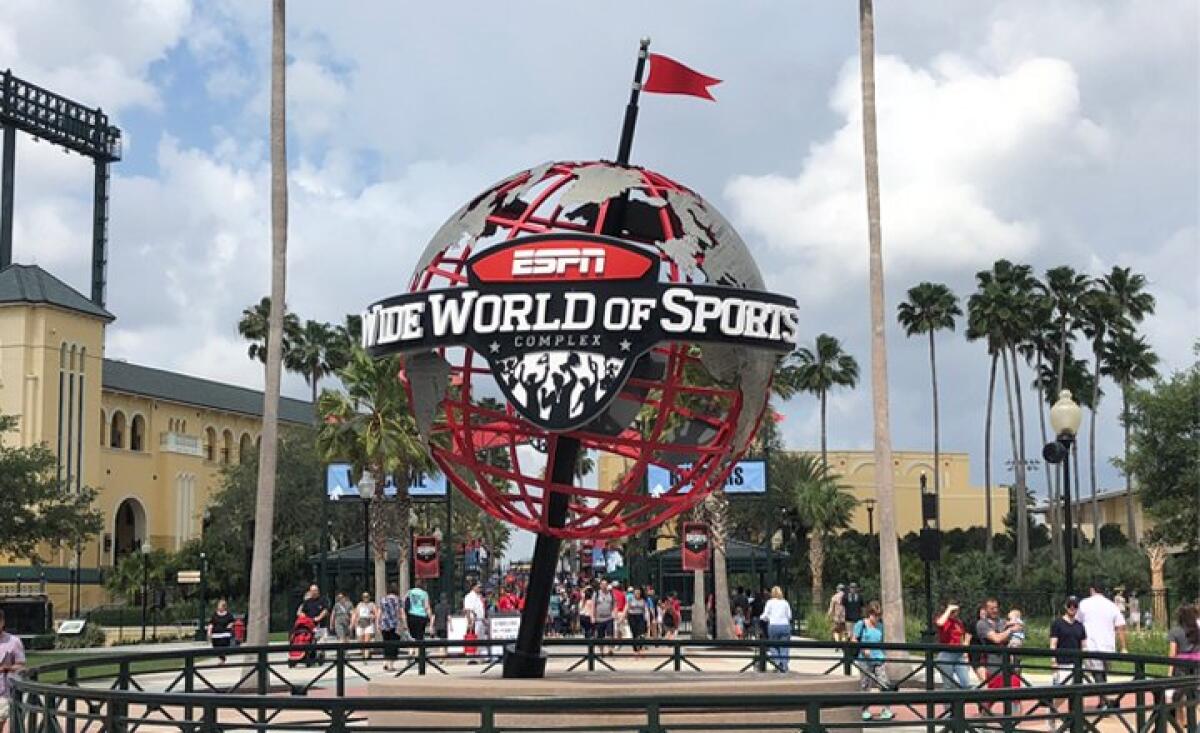
- Share via
The late-summer heat is already beating down on Florida as the NBA player awakes and pulls aside the curtain in his luxury hotel room.
From the Gran Destino Tower, where the Clippers and Lakers will stay in Orlando, Fla., there’s an idyllic view of Lago Dorado. From the Yacht Club, the water is calm on Crescent Lake. And from the Grand Floridian resort, the Seven Seas Lagoon beckons, with Epcot just beyond its treeline.
It’s 9 a.m., and before grabbing an individual serving of breakfast in his team’s dining room, because buffet lines are banned, and undergoing his required daily temperature, symptom and pulse oximetry screening, the NBA player ensures he’s wearing his MagicBand. The wrist-worn device will let him into his room, past security checkpoints and into coronavirus testing areas.
Maybe after the morning workout, he’ll set up a table tennis game in the players’ lounge. But only one teammate can be recruited — doubles isn’t allowed by the NBA.
Welcome to Orlando’s Walt Disney World resort, where, come July the so-called happiest place on earth will transform into the strictest for players, coaches and other league personnel on the inside of the NBA’s long-awaited return.
The nearly 200 combined pages of documents sent Tuesday from the National Basketball Players Assn. to its members, and the NBA to its teams, spelled out for the first time, and in exhaustive detail, what life will look like in the quarantined bubble. The NBA was already governed by a weighty, dryly written tome — its collective bargaining agreement — just as many players already abide by a proven game-day routine.
The new rules address the unprecedented circumstances the league and its players face as they prepare to resume play amid the coronavirus pandemic. It is no abstract threat. In Orange County, where Disney World sits, 5% of people tested during the week of June 7 were positive — more than double the positive percentage from a week before.
The rules in place to keep players safe will require them to create new habits.
Here is what a game day in the life of an NBA player could now look like, as drawn from the league’s plan:
Good morning, Disney
As before the novel coronavirus, the rhythms of game day will revolve around shoot-around and the game itself. It’s just that, here, almost everything surrounding those events is different.
The most important part of the new procedures is testing for the novel coronavirus, which the NBA plans for the evenings in order to reduce how much people will move between the time their test is taken and when it is returned. The tests are expected to include nasal swabs and saliva collection.
The NBA issued nearly 150 pages of documents detailing its plans to restart the season in Orlando, Fla. Here are 25 of the most interesting takeaways.
Anyone who refuses to be tested, or undergo the daily health monitoring that includes temperature and symptoms, will be prohibited from team and group activities until they are tested. Those who test positive and do not require hospitalization will be isolated immediately until they can be retested.
The NBA is in this uncharted situation because the league suspended its season March 11 after the first player tested positive. In Orlando, the league acknowledges that it does not know whether it can complete its resumed season — but here, a single positive test will not shut down operations.
This player’s test returned negative, so after shootaround at one of the seven practice facilities on campus he returns to a noon lunch catered by a Disney culinary team that created a menu customized to his team. Players receive three prepared meals per day, four on game days. A pleasant surprise is also waiting at the hotel: a clean room. Disney housekeepers, donning personal protective equipment, will clean rooms once per week.
Before the player’s early afternoon nap — part of his usual game-day routine — he waits for his appointment with the barber. A teammate left just as the player arrives, but that does not mean he can step immediately into the chair. The disinfecting process will take at least 20 minutes. There are no magazines or newspapers to read because if there were, someone else might have thumbed through them.
While waiting, he spots an assistant coach and video coordinator talking in the resort lobby. They’re several feet apart, and for good reason: All team staffers are required to wear a “proximity alarm” that plays an audio alert if the person is within six feet of someone else for more than five seconds. Players can opt out of the alarm.
The player’s teammates have chosen other ways to relax before that night’s tipoff. Some played golf nearby on the Disney campus, where golfers must ride in individual golf carts and sanitize their hands every time after touching a bunker rake or pin flag.
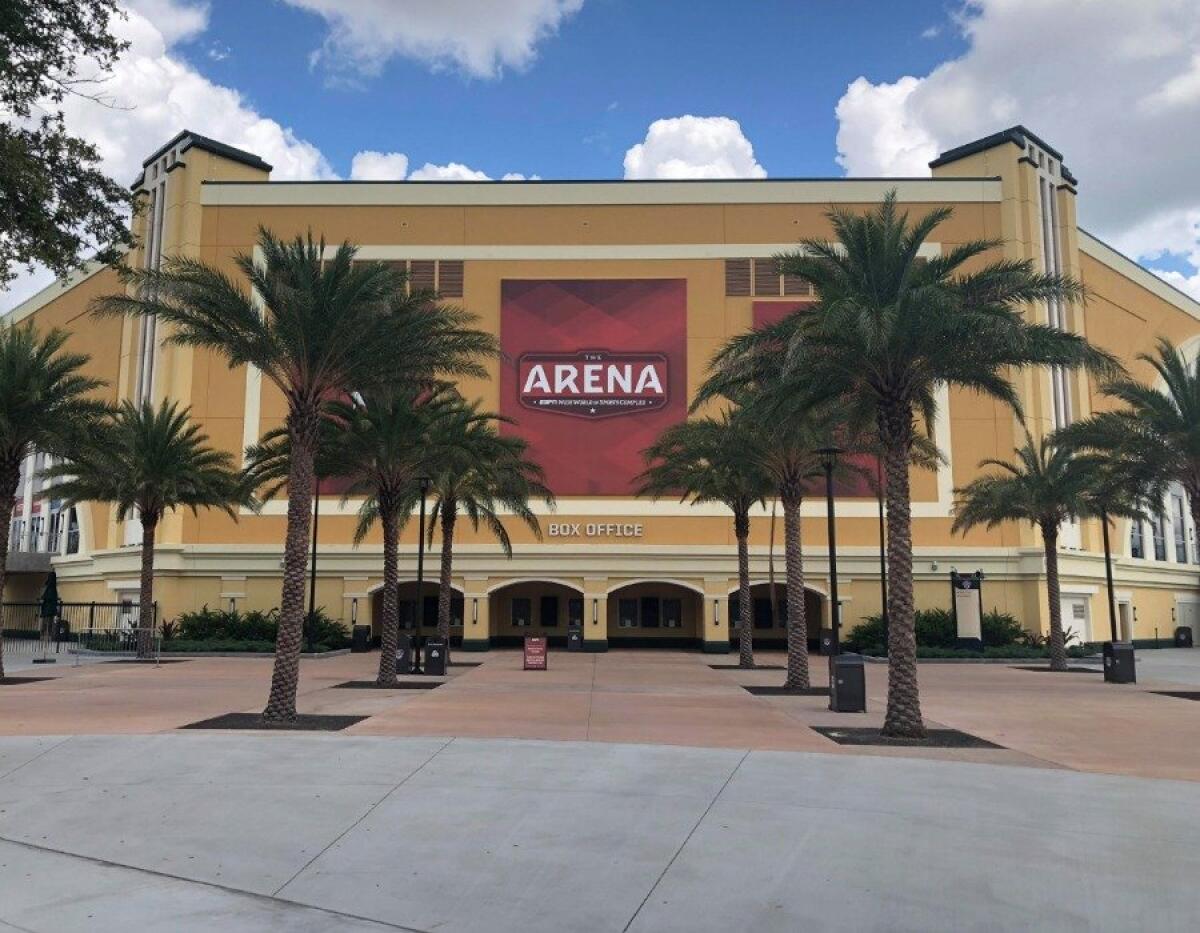
Another teammate goes for a manicure where the player and worker are separated by a plexiglass shield.
The protocols are strict but must be followed, or consequences exist. Teams are required to designate a “team campus health officer” who will ensure compliance, and the league set up a tip line where violations can be reported anonymously. Punishment can include expulsion.
Pregame focus
For a 7 p.m. tipoff, the player departs his hotel for the Wide World of Sports Complex between 4:30 and 5 p.m. The ride will take 15 minutes. Games are held at either the Visa Athletic Center, the complex’s smallest venue, the HP Fieldhouse or the Arena, the largest.
Usually, he would be one of the first to get a feel for the court and its surroundings, working out under the watch of a player development coach. In Orlando, that won’t be possible. Because multiple games can be played in a facility on a single day, players probably will not have access to the court until two hours before tipoff.
There’s another big change before tipoff. No reporters are milling around in the locker room because pregame access is banned.
Time for tipoff
This is not your average game, and not because there are no fans. The coronavirus-related precautions that have altered life off the court have also led to changed habits on it. Wiping the ball with your jersey? Prohibited. Licking your fingers for a better grip, as shooters are known to do? That’s a no-no.
As NBA players consider returning to play, the Lakers’ Avery Bradley and Dwight Howard have concerns but at least one is likely to head to Orlando.
The player looks over to the bench, where teammates sitting in the front row of are not required to wear masks, though it is recommended that coaches in that row do. Players and coaches in the second row must wear masks.
In the stands, the player also sees rivals from other teams and his team’s owner, who is wearing a mask as all spectators and staff must during games. Normally they’d chat, but on campus, NBA governors (usually the owners) are not afforded the same level of access as players and coaches, and thus cannot be in close proximity to one another.
Postgame wind-down
For a few hours, life feels like normal: Three-pointers and charges are taken while pick-and-rolls are executed, the same as they were early in March.
Now it’s 9:40 p.m., the game is over, and reminders of the new realities of campus life are everywhere. Few players change out of uniform because showers are not permitted inside the sports complex. Then it’s time to speak with reporters. A few attend the postgame availability in person, at an appropriate distance of at least six feet. The NBA has allowed a handful of journalists to reside on the Disney campus. Others journalists, even those who reside off campus and can watch games from the stands, ask questions on a virtual news conference. At least one other teammate must also take part in postgame interviews.
Under normal circumstances, teams on the road set up a postgame buffet either inside the locker room or just outside its doors, which players peruse before leaving for the team bus, a container of food in hand. In Orlando, leaving food out for general consumption and “shared serving objects” are prohibited. And so, by 10:25, players get back on the bus for a short ride to the hotel.
After a shower in their room and an individual serving of a meal, it’s time to unwind. Perhaps the NBA will have arranged for a late-night DJ set, or a movie screening. Instead, he heads to the players’ communal lounge for a game of “NBA2K” against friends from home. He brought his own gaming headset, per NBA protocol.
It’s finally time for sleep. The player might slide under the high thread-count sheets and onto the extra-firm pillow he brought from home. Such small things help make this place where he could live for three months feel like home.
In the morning, another rigidly structured day on the resort’s cloistered grounds awaits. Here, it really is a small world.
More to Read
All things Lakers, all the time.
Get all the Lakers news you need in Dan Woike's weekly newsletter.
You may occasionally receive promotional content from the Los Angeles Times.
